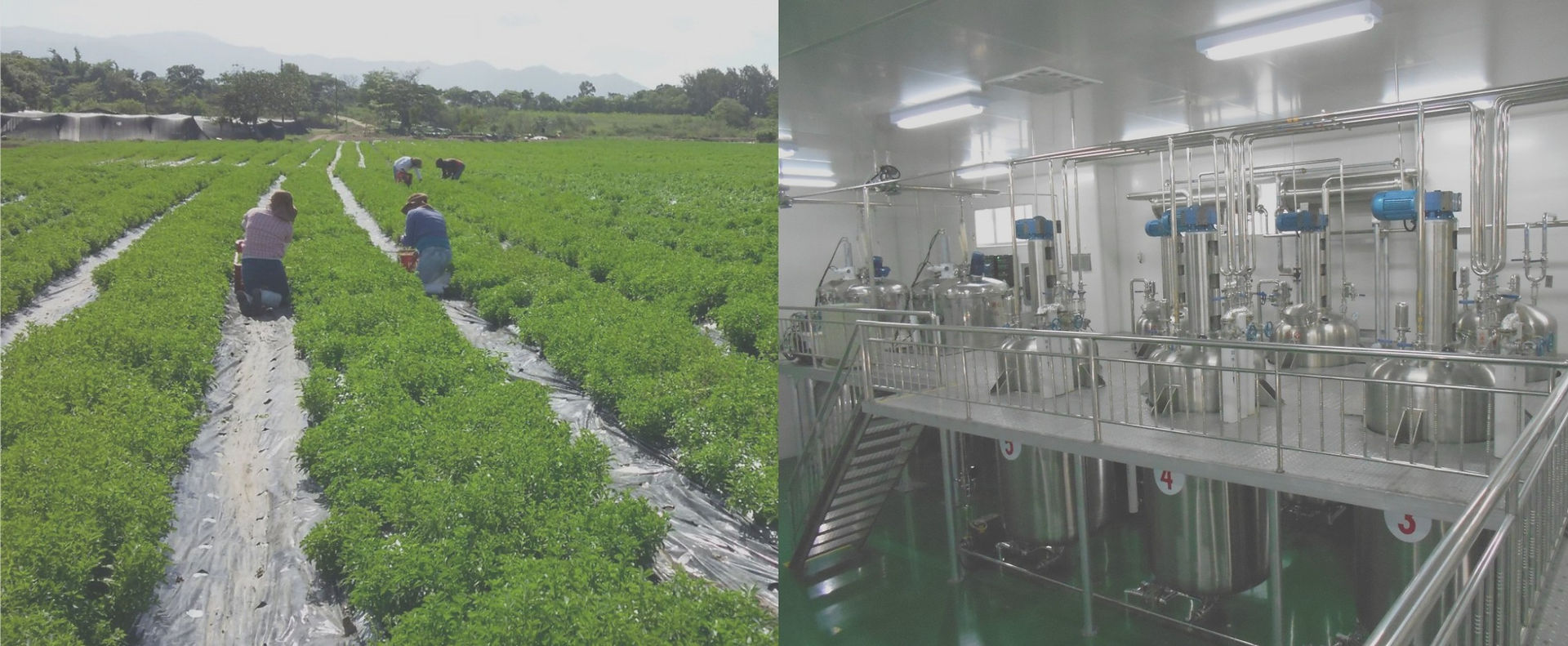
Liquid-liquid counter current extraction
In the small scale extraction process for steviol glycosides, leaves are first extracted with hot water and the liquid extract is subsequently processed to separate steviol glycoside from it. The liquid extract is clarified by either chemical- or electro-coagulation and filtering. Then the liquid is extracted with a water immiscible solvent. The solvent takes up the steviol glycoside from the water extract as the solvent has higher affinity towards the glycosides. In this process, basically, the extracting solvent is vigorously mixed with the water extract and then the mixture is allowed to stand, so that the two layers – water and the extracting solvent - separate. The extraction solvent is then decanted off from the mix. The process is repeated several times until the original water extract is almost free of steviol glycosides. The extraction solvent is now pooled together and evaporated to crystallize out the steviol glycoside.
Classically, there are several methods for solvent extraction. In laboratories and small lab scale systems, it is done as a batch process. The batch process is time consuming and the ratio of extraction solvent to the water extract is often very high.
One of the most efficient liquid-liquid extraction processes is counter-current extraction. It has several advantages. We have developed an optimized liquid-liquid extraction process for steviol glycosides.
Laboratory simulation of continuous counter current solvent extraction



Definition
Liquid–liquid extraction (LLE), also known as solvent extraction and partitioning, is a method to separate compounds or metal complexes, based on their relative solubilities in two different immiscible liquids, usually water (polar) and an organic solvent (non-polar). There is a net transfer of one or more species from one liquid into another liquid phase, generally from aqueous to organic. The transfer is driven by chemical potential, i.e. once the transfer is complete, the overall system of chemical components that make up the solutes and the solvents are in a more stable configuration (lower free energy). The solvent that is enriched in solute(s) is called extract. The feed solution that is depleted in solute(s) is called the raffinate.

In subsequent unit processes, the enriched solvent is evaporated and the target extract is crystallized. The solvent vapour is condensed by cooling and the recovered solvent is used again in the process.


The Solvent Extraction process replaces the resin adsorption unit processes of the classical extraction process. This solvent extraction process has multiple advantages and is superior to the conventional process.
Advantages of the Counter-current Liquid-liquid Extraction process -
(1) Continuous process – fast and efficient
(2) The process can handle more concentrated water extract than the resin process
(3) The multiple stage process comprising -
a. adsorption of steviol glycoside on resin
b. elution of steviol glycoside by alcohol
c. regeneration of resin by chemicals
d. rinsing the resin column with RO water to make it from chemicals used for column regeneration
f. removal of water from resin by compressed air
is replaced by a single step continuous process.
(4) No consumable regeneration solution required –cost saving
(5) Formulation and storage facility of regeneration chemicals not required
Basics of the equipment designed by us
We have employed a customized multiple stage rotating impeller column in our process. The design is partially based on Kûhni column system. The working principle of the column is described in the following diagram.

We have standardized the following parameters for optimum efficiency of the Liquid-Liquid Counter Current Extraction system –
-
Appropriate extraction solvent
-
Feed rate of water extract and solvent
-
Water extract to solvent ratio
-
Maximum concentration of TSG in water extract
-
Perforated plate and impeller dimensions
-
Impeller rotational speed
-
Required pre-treatment of water extract to reduce frothing and emulsification
The solvent system
Identification of the appropriate solvent system is very crucial for the process. The solvent system needs to have very high affinity towards all steviol glycosides. The partition coefficient of all the steviol glycosides between the organic solvent phase and the water phase should be high enough for efficient extraction. The solvent system should preferentially extract the target steviol glycosides only, leaving behind all the unwanted components in the water extract.
We have identified the proper solvent system which conforms to these requirements. It is a mixture of non-toxic food grade fatty alcohols. We have confirmed that the solvent system does not preferentially extract specific steviol glycosides. The HPLC chromatograms of both the water extract and the solid TSG crystallized from the solvent system shows similar glycoside profile.












